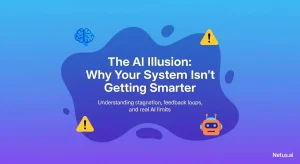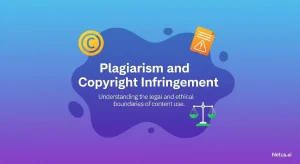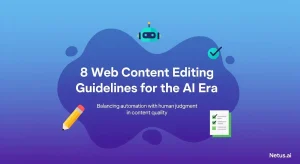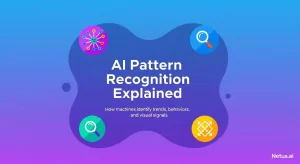What Does a Plagiarism Report Consist of: Key Components Explained
Ashley Merit
Content writer and editor for Netus.AI
Table of Contents
what is plagiarism report
What Does a Plagiarism Report Consist of. As the concern for combating plagiarized content increases, the reliance on advanced plagiarism checkers has grown. These advanced tools are essential for identifying not just obvious similarities, but also uncovering subtle cheats within a text. A comprehensive plagiarism report generated by these tools should provide all the necessary information for users, from similarities to the exact words used in the source material.
The goal of this article is to shed light on fundamental questions regarding plagiarism reports and scores, to help users navigate the complexities of detecting and avoiding plagiarism. Adequate understanding of plagiarism reports and their components can play a vital role in maintaining the integrity of one’s work, whether it be research papers, articles, assignments, or any other form of written content.
Key Takeaways
- Plagiarism checkers are essential to identify similarities and subtle cheats in content
- A comprehensive report is vital for ensuring the integrity of one’s work
- Understanding plagiarism reports and scores helps navigate the complexities of plagiarism detection
What is Plagiarism?
Plagiarism occurs when a writer incorporates ideas or information from another work without properly crediting the original source. This can take various forms, from copying exact wording to paraphrasing without proper attribution. Understanding plagiarism is crucial for maintaining academic integrity and avoiding potential consequences.
There are different types of plagiarism, such as:
- Self-plagiarism – reusing one’s own previously published work
- Word-for-word plagiarism – copying content verbatim
- Paraphrasing plagiarism – restating ideas without proper attribution
Using citation styles is essential to avoid plagiarism. Different styles have specific guidelines to follow, and it can be helpful to consult with instructors or colleagues for advice.
Paraphrasing is another aspect to consider when avoiding plagiarism. Overusing a academic paraphrasing tool can lead to unintentional plagiarism, so it is best to balance your own thoughts and insights to create unique content.
To avoid plagiarism, make use of:
- Quoting – Include direct quotations from sources, ensuring they are placed within quotation marks and appropriately cited.
- Paraphrasing – Rephrase information from the original source, but always give credit to the author.
Plagiarism is considered an act of academic dishonesty and can result in severe consequences, such as suspension or expulsion from an academic institution. Hence, it is essential to practice ethical writing by accurately attributing sources and maintaining originality in your work.
What Makes an Effective Plagiarism Report?
An essential part of any plagiarism checker is the generated plagiarism report, which assists users in making necessary revisions to their work. Here are some key criteria that characterize a well-crafted plagiarism report:
- Accurate Plagiarism Percentage: A plagiarism report should precisely represent the percentage of similar content detected in the text. Modern reports generally use color-coding to indicate the risk level associated with different percentages, such as green for low risk, yellow or orange for moderate risk, and red for high risk.
- Highlighted Plagiarized Content: The report should clearly highlight plagiarized text, making it easy for users to identify and amend it. Side-by-side views that show the original source alongside the copied text can be particularly helpful. Advanced plagiarism detection software may use distinct colors to flag various types of plagiarism, such as red for exact matches, pink for paraphrased content, and orange for potential plagiarism.
- Option to Exclude Specific Words: This feature, typically absent from free plagiarism tools, allows users to exclude certain terms from the report. For example, keywords essential for SEO purposes might be exempted, so that the focus remains on the actual percentage of copied content in an article, allowing users to make appropriate adjustments.
- Cheat Detection Alerts: This innovative feature is found in many modern plagiarism checkers. By leveraging artificial intelligence technology, the software can detect attempts to cheat the system and notify users accordingly. Cheats may involve using special characters or symbols to make the tools’ algorithms interpret certain words differently.
- Organization and Clarity: A plagiarism report should be well-structured and easy to understand, featuring elements such as a legend for color codes, an explanation of each color’s significance, and a side-by-side comparison of the copied and original text. This will improve the user’s overall experience and make the report more effective.
In summary, a reliable plagiarism report should provide accurate percentages, highlight copied content, offer options for excluding certain words, detect potential cheating, and be clear and concise in its presentation. Keep these criteria in mind when evaluating the effectiveness and usability of a plagiarism detection tool’s report.
What Is the Plagiarism Acceptable Percentage?
The acceptable percentage of plagiarism varies depending on the type of document. For instance, in higher education academic papers, 15% is generally considered as the acceptable limit, while for journal articles, the threshold can be 24%. Plagiarism detection has become much simpler with the advancement of plagiarism checker tools, which assess similarities in the content efficiently.
However, selecting the most suitable tool from the myriad of options available is quite challenging. A comprehensive plagiarism report is vital for determining the effectiveness of a plagiarism checker. Knowing what a good report must include can assist in making an informed decision.
Key aspects of a plagiarism report include:
- Plagiarism Percentage: Displays the overall similarity of the content as a percentage.
- Matched Sources: Lists the sources that share similarities with the submitted text.
- Citation Check: Ensures that citations are correctly attributed to sources.
It’s important to remember that avoiding plagiarism is crucial, and maintaining an acceptable plagiarism percentage helps in producing authentic, reliable, and credible work.
Frequently Asked Questions
What is typically found in a plagiarism report’s content?
A plagiarism report often includes information such as:
- The percentage of similarity detected in the document
- A list of matched sources found in the reference database
- Highlighted sections of the document that are similar to the matched sources
How do popular tools generate plagiarism reports?
Plagiarism checkers use algorithms to:
- Break down the document into smaller text fragments
- Compare these fragments to a large database of sources (academic articles, web content, etc.)
- Identify similarities between the text fragments and the reference database, and
- Generate a report highlighting the similarities and listing the matched sources
What is an acceptable similarity percentage in a plagiarism report?
An acceptable similarity percentage can differ depending on the context and the institution. Generally, a similarity index of less than 10% is considered acceptable in academic writing. However, some publishers may allow a higher percentage, while others may require a lower threshold.
What are the main components of a standard plagiarism report?
A standard plagiarism report usually contains the following sections:
- Overview: A summary of the document’s similarity index and the total number of matches found
- Matched Sources: A list of sources that have similarities with the document, including links to the original source material
- Similarity Details: A detailed view of the highlighted similarities within the document, with side-by-side comparisons to the matched sources
How do various plagiarism checkers display their findings in reports?
Different plagiarism checkers may present their findings in various ways, such as:
- Color-coded highlights indicating similar content
- Side-by-side comparisons between the document and matched sources
- Interactive reports that allow users to navigate through the highlighted similarities and investigate each match
What steps should be taken to interpret a plagiarism report’s results?
To interpret the results of a plagiarism report, the reader should:
- Review the similarity percentage and determine if it is acceptable within the context
- Examine the matched sources to understand the nature of the similarities (e.g., common phrases, ideas, or direct copying)
- Assess the highlighted sections and decide if they need to be revised or rephrased to reduce similarity or properly cite the original source
what is the allowed percentage of plagiarism , site:netus.ai , what is a plagiarism report

The shortcomings of content generated by AI | NetusAI
Discover why fast, high-volume AI content often fails to deliver real results. Learn about the crucial missing feedback loop and how implementing performance tracking can transform your AI content strategy.

The illusion of AI: Your system's intelligence gap | NetusAI
Stop wasting marketing spend! Most AI tools don’t learn from results, causing content stagnation and low engagement. Discover why your generative AI isn’t getting smarter and what system actually learns and optimizes content.

Plagiarism and copyright infringement | NetusAI
Learn the distinct differences between plagiarism and copyright infringement. Understand the ethical and legal implications and get practical strategies for avoiding both academic and creative work with NetusAI.

Tips and strategies for mobile content marketing | NetusAI
Optimized for mobile-first indexing, learn 5 essential strategies to capture attention, enhance engagement and drive leads and sales with your mobile content marketing.

Web content editing guidelines for the AI era | NetusAI
Review web content editing guidelines for the AI era. Learn how to edit AI-generated content, ensure authenticity and optimize for SEO and readability.

Explaining AI pattern recognition | NetusAI
AI pattern recognition enables machines to identify trends for diverse applications, from detecting plagiarism to fraud. Discover its processes, models and real-world benefits.
